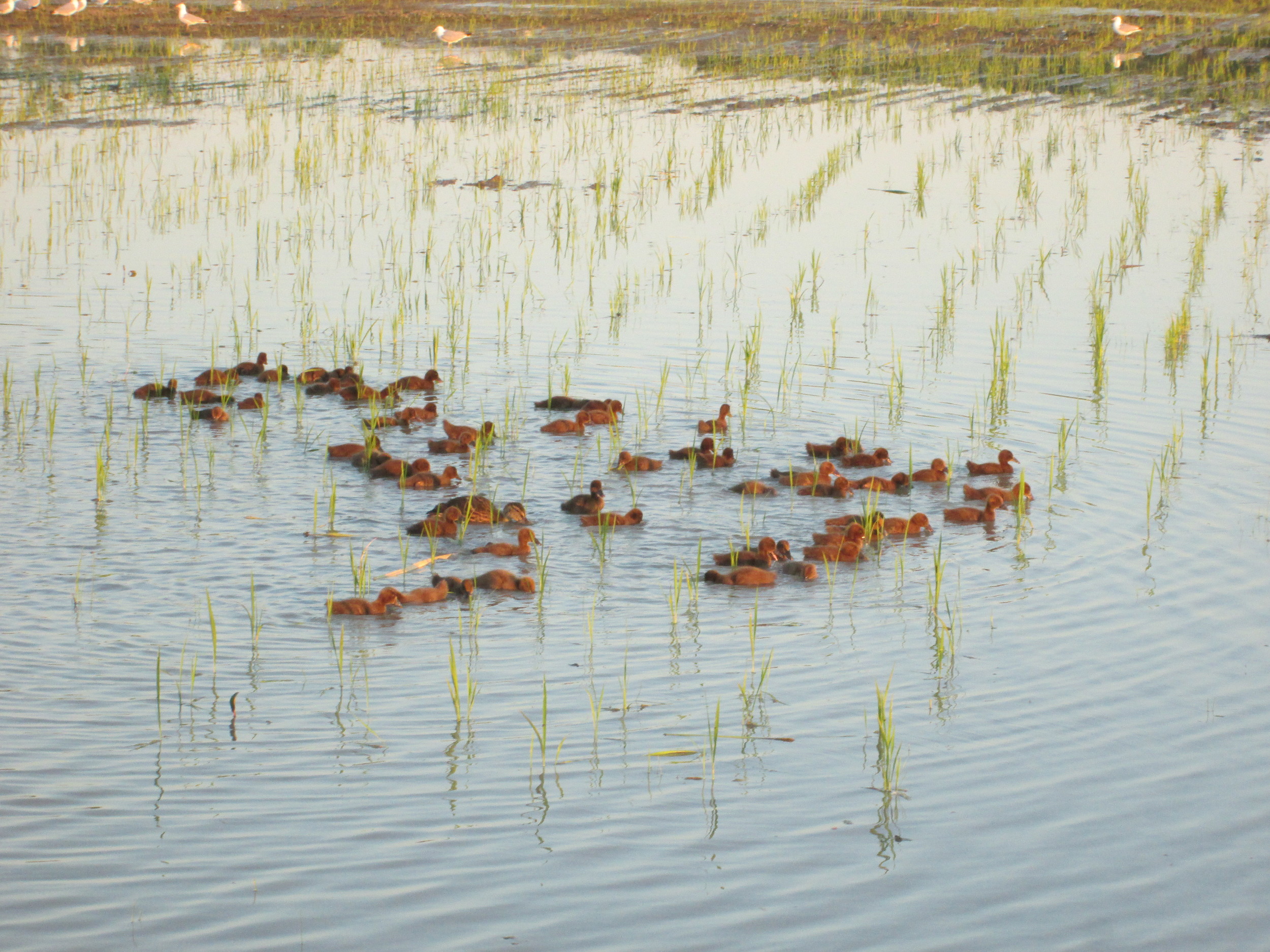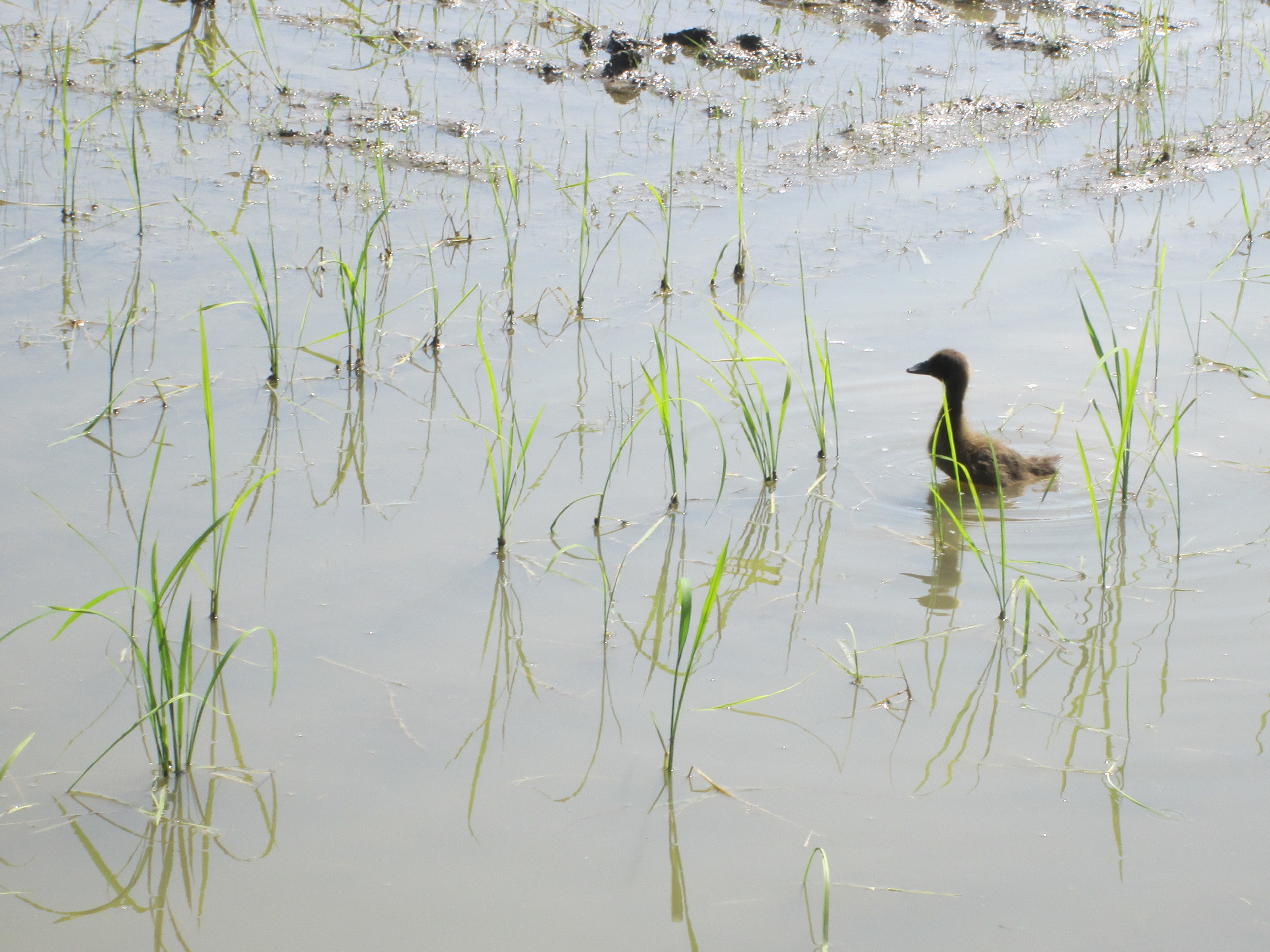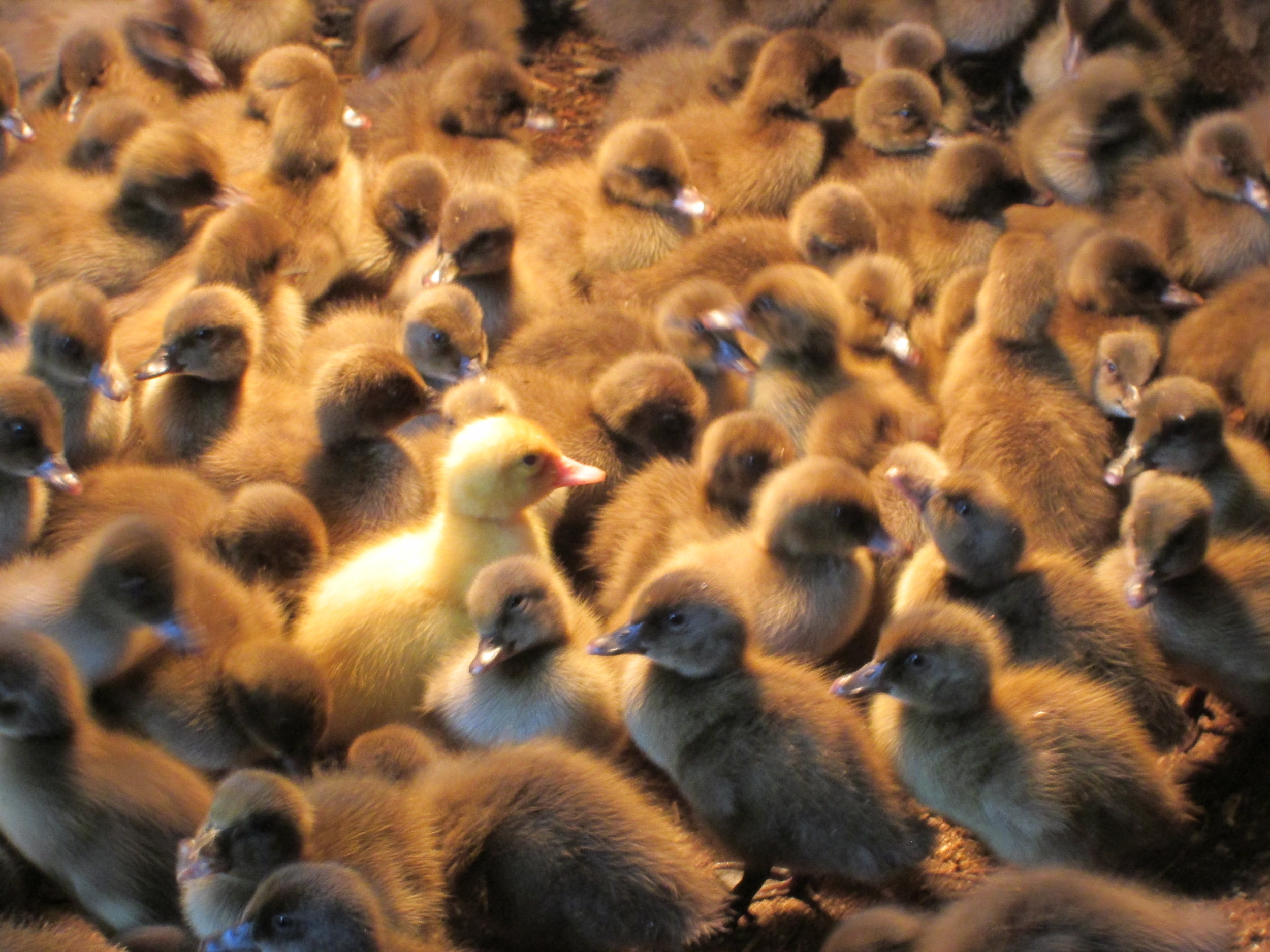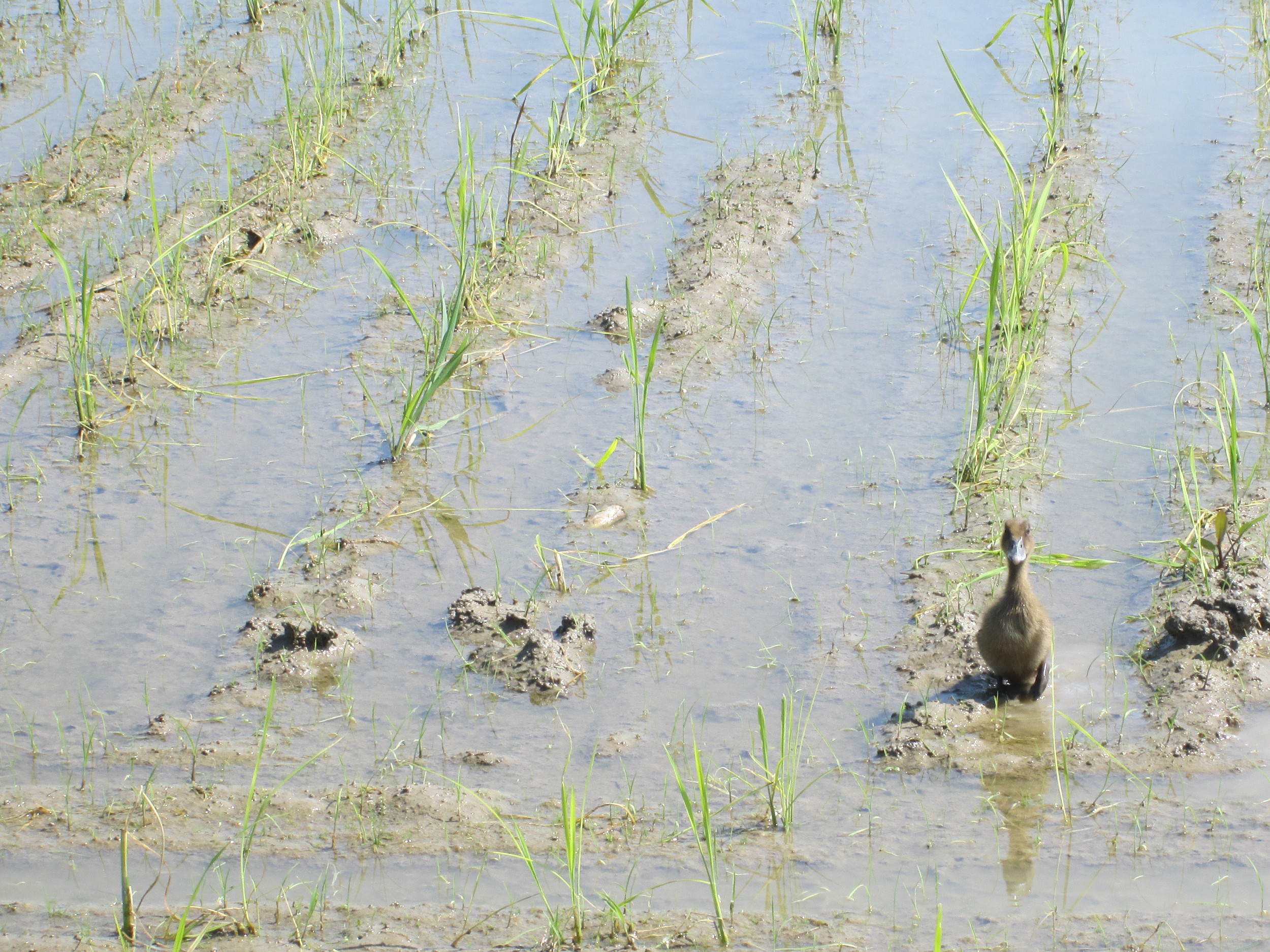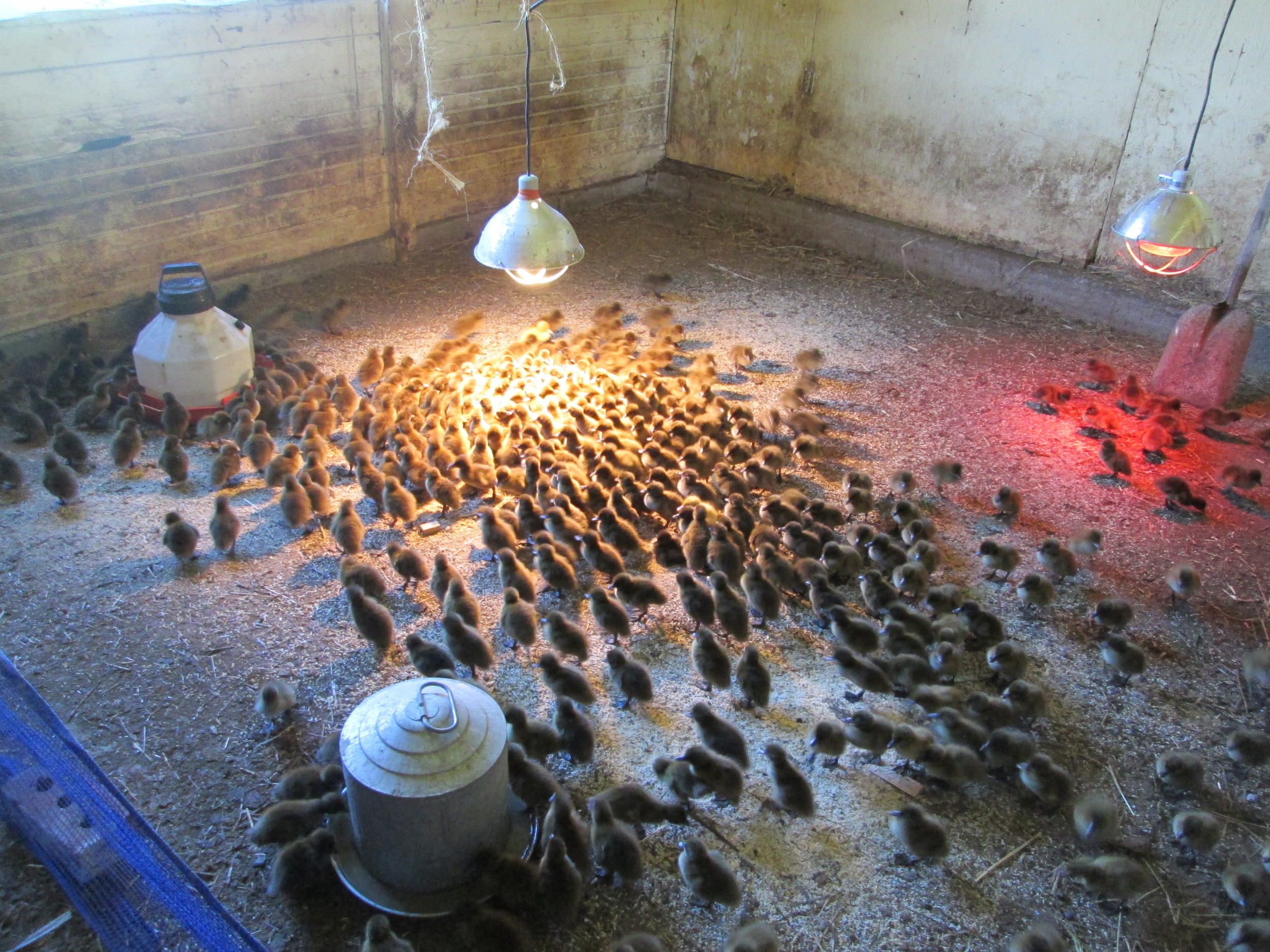
THE LATEST QUACKS
Duck deployment 2016
Now it's the tail end of June and the rice fields are greening up. This year we planted almost exactly 3 acres of four Japanese varieties, Hokkai, Akitakomachi, Oborozuki and Nanatsuboshi. All are doing well.
about 250 ducks have already been released into the rice paddies and the remaining 150 will go out tomorrow or Friday. This development in the season is a turning point--the point when hopefully the animals start, collectively, doing more work than the humans.
Duck and rice farming has a lot of technique wrapped up in it. The plants, the ducks, and the field conditions, and the timing all have to be just right for the method to work. We depend on the ducks to keep our fields weed-free and for fertility. A few years I tried to rely on hand weeding and I can't go there again. Pulling up weeds one square foot at a time while standing in deep mud is not a great pastime. It's all right for a very small scale project but for one like ours, which aims to produce tons rather than pounds of rice, hand weeding is no option for my 44-year old body. Chemicals are no kind of option either. But duck rice farming is an effective answer to the problem--if you can pull it off!
Last year we only planted about one acre but we actually managed to get the timing and the above variables right, or close enough to right. Timely introduction of the ducklings into the crop seems to be key. We noticed differences in weed pressure, and, after that, in yield and quality, between plots where we got the ducks in within 10 days and plots where we did not. This year the majority of the plots we are farming got their ducklings swiftly. That remaining group of ducklings I mentioned earlier that is still cooling their heels in the barn (do ducks have heels?) is going to be a little late but I think close enough. It's all a big experiment.
